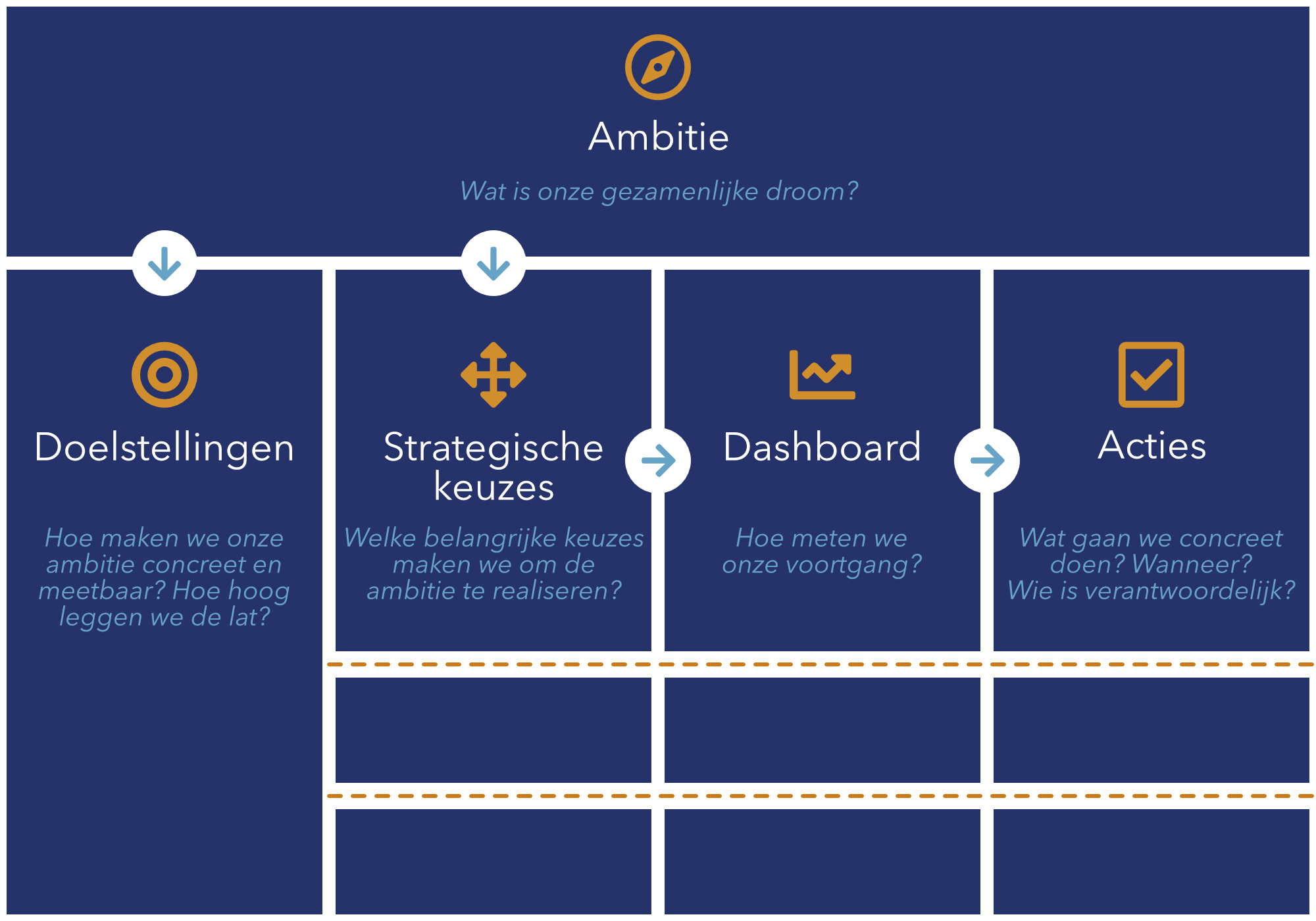The difference between goals and indicators
The OGSM model contains Goals and Indicators (Measures). What is the difference?
You use the goals to determine whether you have achieved the Objective
You determine the target year when drawing up your plan. When do you want to realize the objective? Next year? In three years? The goals are a quantitative translation of the objective. If you have achieved the goals at the end of the term, then you have achieved the objective.
You use the indicators to determine progress along the way
Are you on the right track during the implementation of your plan? Are the actions you are taking delivering the right results? The indicators show how you are doing. They are therefore a dashboard during the journey you undertake to realize your objective.

Determining goals and indicators is a difficult process
The purpose of the goals is twofold, they make the objective concrete and measurable:
- The goals make concrete what exactly you mean by the objective. When are you “the most innovative”, do you have “the highest quality” or are you “the best employer”?
- You use the goals to determine whether you have achieved the objective, as mentioned above.
The function of the indicators is roughly the same, but for the strategies:
- The indicators make concrete what the strategies are.
- The indicators make the progress measurable.
In practice, setting goals and indicators turns out to be a difficult job. "Well, what exactly do we mean?" and "How should we make that measurable?" A few tips to get you started.

1. Good preparation is half the job
A vague objective and vague strategies are often the result of a bad process. If you have not made a proper analysis of the strengths and vulnerabilities and of opportunities and threats in your environment. If you are not clear about the challenges that arise. If you haven't had a creative dialogue about strategic options for responding to the challenges. If you don't have clear criteria for making choices. How, then, can you be surprised by vague objective and vague strategies? After all, you cannot properly determine your direction, so keeping everything nice and vague is a safe choice.
2. Imagine what the result looks like
Take this objective, for example: "By 2023 we will be a successful international company by fully focusing on online services." Chop the objective into pieces and always ask the question: How do we see…? Or: What shows…?
- How do we see that we are successful? Possible goals:
- Turnover is greater than 1 million euros
- Profit percentage is greater than 10%
- Or do you prefer to look at the market: market share is greater than 25%.
- How do we see that we are an international company? Possible goals:
- Active in at least 5 countries
- Turnover per country is at least 100.000 euros
- What shows that we are fully committed to online services? Possible goals:
- At least 80% of sales comes from online channels
- At least 80% of our customers come via online channels
3. Consider what effort you have to make to achieve the result
Make a difference between result indicators and effort indicators. The first show what the result looks like (see previous section). The second indicate whether you are making the right effort. Suppose you have the following strategy: "Our turnover abroad grows through active account management."
- Result indicator: 3% revenue growth per quarter
- Effort indicator: at least 3 account calls per week
Effort indicators are important to learn if you are on the right track:
- Have you made the effort, but the result is not satisfactory, then you have to ask yourself whether you are making the right effort. In the example: maybe 3 account conversations per week are not enough and you have to do more, but maybe you should also supplement the conversations with mailings.
- If you have not made the effort, but the result has been achieved, you have to ask yourself whether you are ambitious enough. In the example: have you only had 1 account conversation per week, but is the revenue growth 3%? Then the objective can be increased a bit. Or maybe there are other activities that lead to the result and therefore work much better than account conversations?
Effort indicators are also suitable if results indicators are difficult to measure. Imagine you aim for higher customer satisfaction, but it is impossible or too expensive to measure this every quarter or even every year, then effort indicators are an alternative.
4. Don't stick with goals and indicators
Setting goals and indicators is often not an activity that produces the most energy. "When will we finally decide what to do?" Of course they are important, but good targets and indicators are good enough. It doesn't have to be perfect. The most important function is that goals and indicators make the objective and strategies concrete. If everyone knows what is meant, you can continue with the process. The goals and indicators can also be refined later in the process.
5. Only necessary goals and indicators
In this case, less is more. Only define the goals and indicators that are necessary to achieve your objective or monitor your strategy. Limit yourself to the essence: what you really care about. It is often advisable to include some preconditions. This often concerns financial goals, such as turnover or return.


